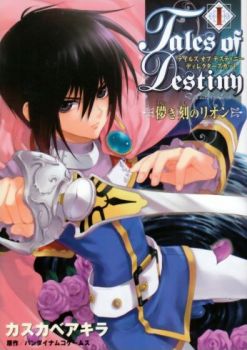Castle (The Seventh Tower 2) by Garth Nix is a captivating continuation of the enchanting series that immerses readers in a richly imagined world filled with danger, intrigue, and the struggle for survival. Set against the backdrop of the Dark World, where ice, wind, and fury reign supreme, Nix crafts a narrative that is both thrilling and thought-provoking, exploring themes of belonging, identity, and the complexities of good versus evil.
The story picks up with Tal and Milla, two protagonists whose paths are fraught with peril as they navigate their respective missions toward the Castle, the only beacon of light in a world shrouded in darkness. Tal, a Chosen, finds himself in a precarious position; he is drawn back to the Castle that he once called home, yet he is met with hostility and suspicion. This conflict sets the stage for a profound exploration of identity and belonging. Tal's journey is not just a physical one but also an emotional and psychological struggle as he grapples with his past and the implications of his return.
Milla, on the other hand, is an Icecarl warrior, representing a stark contrast to Tal. Her presence in the Castle is seen as a threat, and her mission is laden with the weight of her people's history and their animosity towards the Castle dwellers. Nix does an exceptional job of developing Milla's character, showcasing her strength and resilience while also revealing her vulnerabilities. As a warrior, she embodies the fierce spirit of her people, yet her journey also highlights the theme of understanding and acceptance. Milla's interactions with the Castle's inhabitants challenge her preconceived notions and force her to confront the complexities of her own identity.
The interplay between Tal and Milla is one of the most compelling aspects of the narrative. Their paths are intertwined, and as they face external threats, they also confront their internal struggles. Nix skillfully weaves their stories together, creating a dynamic that is both tense and poignant. The evolution of their relationship serves as a microcosm of the larger conflicts at play in the Dark World, where alliances are fragile, and trust is hard-earned. This exploration of relationships and conflict resolution is a testament to Nix's ability to create multidimensional characters that resonate with readers.
The world-building in Castle is nothing short of remarkable. Nix paints a vivid picture of the Dark World, with its harsh landscapes and the ominous presence of the Castle. The contrast between the icy exterior and the warmth of the Castle serves as a powerful metaphor for the themes of light versus darkness, both literally and figuratively. The Castle itself becomes a character in its own right, representing safety and danger, acceptance and rejection. Nix's descriptive prose immerses readers in this fantastical realm, making them feel the chill of the wind and the weight of the looming shadows.
As the plot unfolds, readers are introduced to a host of supporting characters, each adding depth to the narrative. The sinister forces conspiring against Tal and Milla create a palpable tension that drives the story forward. Nix expertly balances action with introspection, ensuring that the stakes remain high while allowing for moments of reflection. This balance is crucial in maintaining reader engagement, as it prevents the narrative from becoming overly reliant on action sequences at the expense of character development.
The themes of courage, sacrifice, and the quest for truth are prevalent throughout the book. Tal and Milla must confront their fears and make difficult choices that will ultimately shape their destinies. Nix does not shy away from the harsh realities of their world, and the consequences of their actions resonate long after the final page is turned. This moral complexity adds a layer of depth to the story, inviting readers to reflect on their own values and beliefs.
In comparison to other works in the fantasy genre, such as Philip Pullman's His Dark Materials or J.K. Rowling's Harry Potter series, Nix's writing stands out for its unique blend of dark themes and rich character development. While both Pullman and Rowling explore the battle between good and evil, Nix delves deeper into the nuances of identity and the gray areas that exist within moral dilemmas. The characters in Castle are not simply heroes or villains; they are complex individuals shaped by their experiences and choices, making their journeys all the more relatable and impactful.
Overall, Castle (The Seventh Tower 2) is a masterfully crafted tale that captivates readers with its intricate world-building, compelling characters, and thought-provoking themes. Garth Nix has created a narrative that is both entertaining and meaningful, inviting readers to reflect on their own journeys of self-discovery and the importance of understanding others. As Tal and Milla navigate the treacherous landscape of the Dark World, readers are reminded of the power of resilience, the strength found in unlikely alliances, and the enduring quest for light in the face of overwhelming darkness.
For those who enjoy fantasy literature that challenges conventions and delves into the complexities of human nature, Castle is a must-read. Nix's ability to blend adventure with profound themes ensures that this book will resonate with readers long after they have turned the last page.























Reviews 0
Post a Reviews: